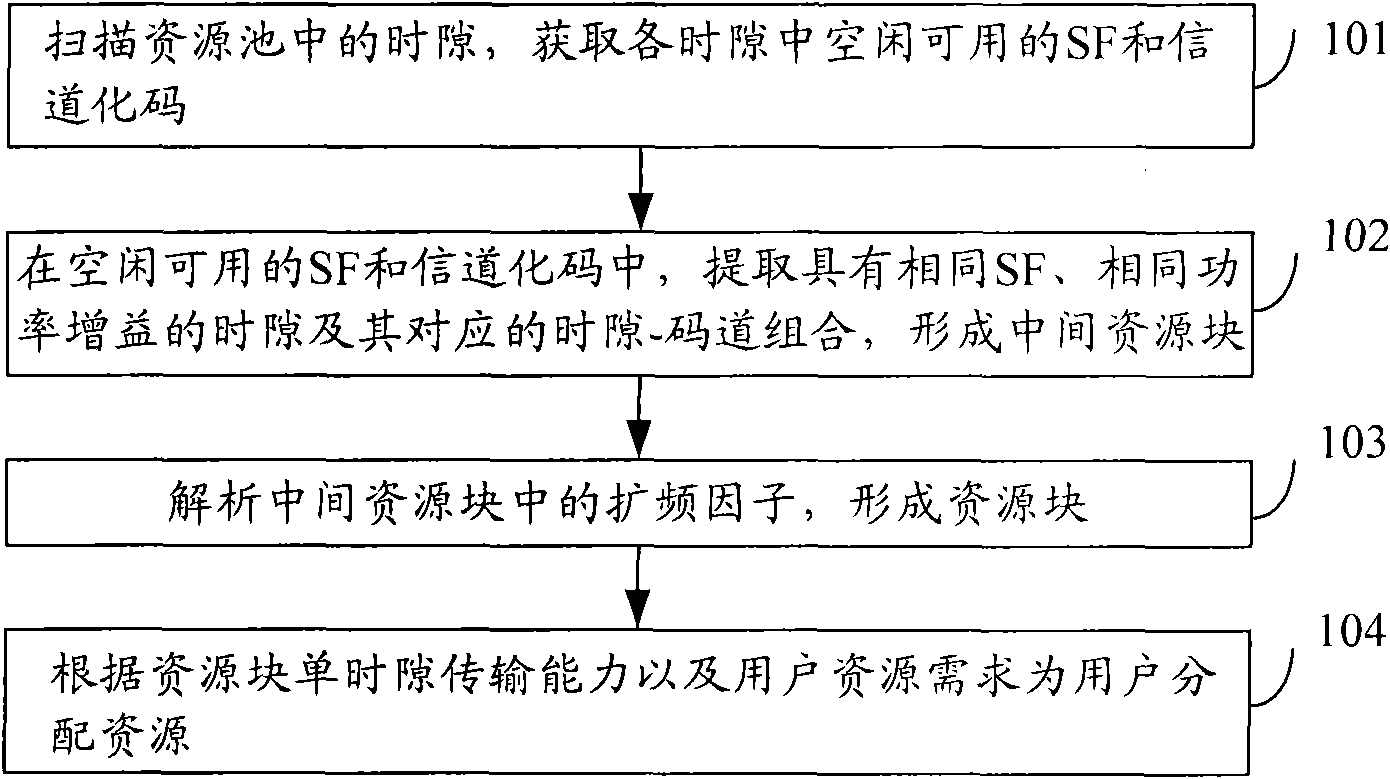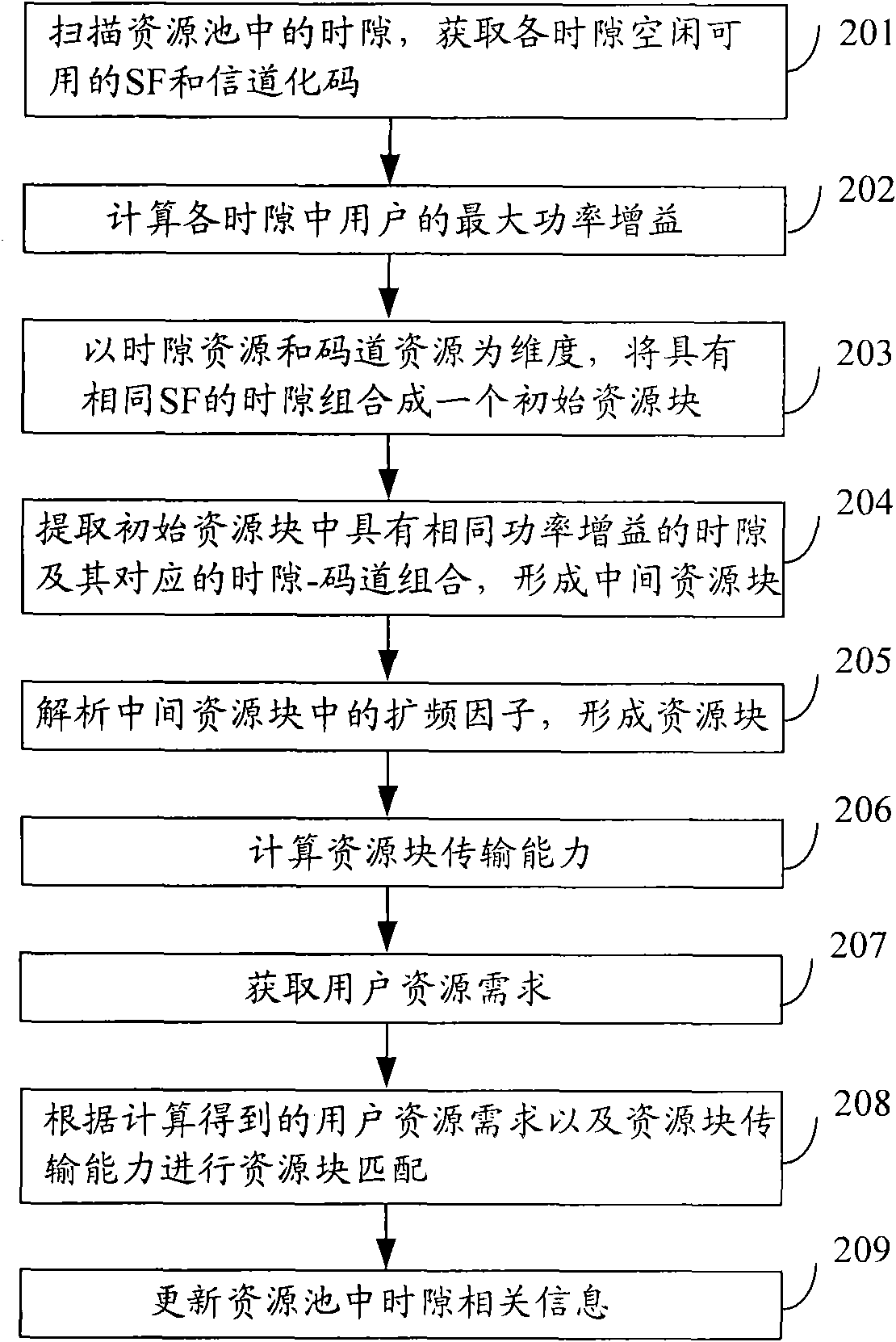Uplink resource allocation method and uplink resource allocation device
A resource allocation and resource block technology, applied in the field of uplink resource allocation methods and uplink resource allocation devices, can solve the problems of reducing the number of users that the system can accommodate, waste of allocated resources, and low utilization of system resources, so as to increase the capacity of the system. The number of users accommodated, the effect of reducing waste of resources and improving the utilization of system resources
- Summary
- Abstract
- Description
- Claims
- Application Information
AI Technical Summary
Problems solved by technology
Method used
Image
Examples
Embodiment Construction
[0083] In order to make the purpose, technical solution and advantages of the present invention clearer, the present invention will be further described in detail below in conjunction with the accompanying drawings and specific embodiments.
[0084] In the prior art, uplink resource allocation adopts time-division allocation or code-division allocation. Since the granularity of resource allocation is single, the allocated resources are likely to be larger than the user's buffer capacity, resulting in waste of resources. In the embodiment of the present invention, time-division The resource allocation method combining allocation and code division allocation, comprehensively consider the time slot resource and the code channel resource of the time slot, refer to the configuration information transmitted by the RNC through NBAP signaling and the scheduling information reported by the user, and calculate the actual buffer size of the user. The number of required time slots and the ...
PUM
 Login to View More
Login to View More Abstract
Description
Claims
Application Information
 Login to View More
Login to View More - R&D
- Intellectual Property
- Life Sciences
- Materials
- Tech Scout
- Unparalleled Data Quality
- Higher Quality Content
- 60% Fewer Hallucinations
Browse by: Latest US Patents, China's latest patents, Technical Efficacy Thesaurus, Application Domain, Technology Topic, Popular Technical Reports.
© 2025 PatSnap. All rights reserved.Legal|Privacy policy|Modern Slavery Act Transparency Statement|Sitemap|About US| Contact US: help@patsnap.com



